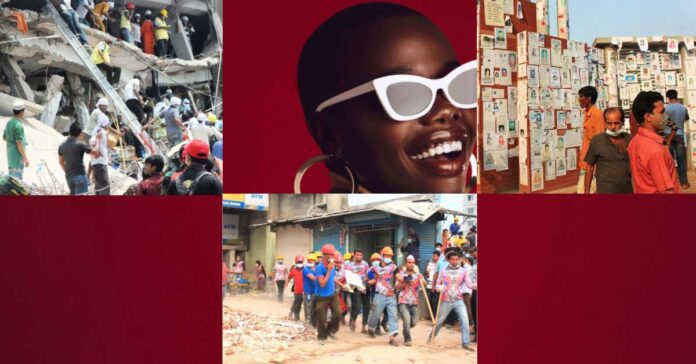Rana Plaza Tragedy: Workers’ Rights Remain Challenged: Outreinfo- New Hot Topic
Ten years ago, a devastating accident known as the Rana Plaza Tragedy shook the world of fashion. Over 1,100 people died and thousands more were injured when a building that housed several garment factories collapsed in Rana Plaza, Bangladesh. The incident revealed the dark side of the global fashion industry, which exploits cheap labor and disregards safety standards to produce clothes for mass consumption.
The building, known as Rana Plaza, was an eight-story structure that contained five garment factories, a bank, shops and apartments. It was in Savar, a suburb of Dhaka, the capital of Bangladesh. The building had been declared unsafe by engineers after cracks were detected on the walls on April 23, 2013, but the factory owners ignored the warnings and threatened to withhold wages from workers who refused to return to work. The next day, on April 24, 2013, the building collapsed during the morning rush hour. Most of the victims were women and children who worked long hours for low wages.
The tragedy sparked worldwide outrage and calls for reform in the fashion sector. It also led to the creation of the Accord on Fire and Building Safety in Bangladesh, a legally binding agreement between over 200 brands and retailers, trade unions, NGOs and governments to improve safety standards and inspections in garment factories. According to a report by Academia.edu , the Accord is designed to structurally improve working conditions in Bangladesh’s RMG sector, specifically focusing on health and safety issues. The Accord has been credited with preventing further disasters and saving lives, but it also faces challenges and criticisms from some stakeholders.
Major Player in the Global Fashion Market with Ongoing Challenges
Bangladesh is a major player in the global fashion market, ranking as the third-largest exporter of clothing after China and the European Union. However, the country still struggles with issues such as workers’ rights, environmental impact, transparency and accountability. The fashion industry must continue to work with local partners and civil society to ensure that the lessons learned from Rana Plaza are not forgotten and that workers are treated with dignity and respect.
While significant strides have been made in improving worker safety, there is still much work to be done. According to data from the International Trade Union Confederation, Bangladesh ranks among the ten worst countries for workers’ rights, alongside nations such as Belarus, Brazil, Colombia, Egypt, Sweden, the Philippines, Guatemala, Myanmar, and Turkey.
Highlighting the significance of Bangladesh in the global fashion market, our second chart reveals it is the world’s third-largest exporter of clothing, following the European Union and China. This position underscores the need for continued efforts to ensure the protection and well-being of workers in the country’s garment industry. As we reflect on the progress and challenges since the Rana Plaza tragedy, the fashion industry must remain committed to upholding workers’ rights and promoting safer working conditions worldwide.
To read more research paper on new hot topics – Click here

